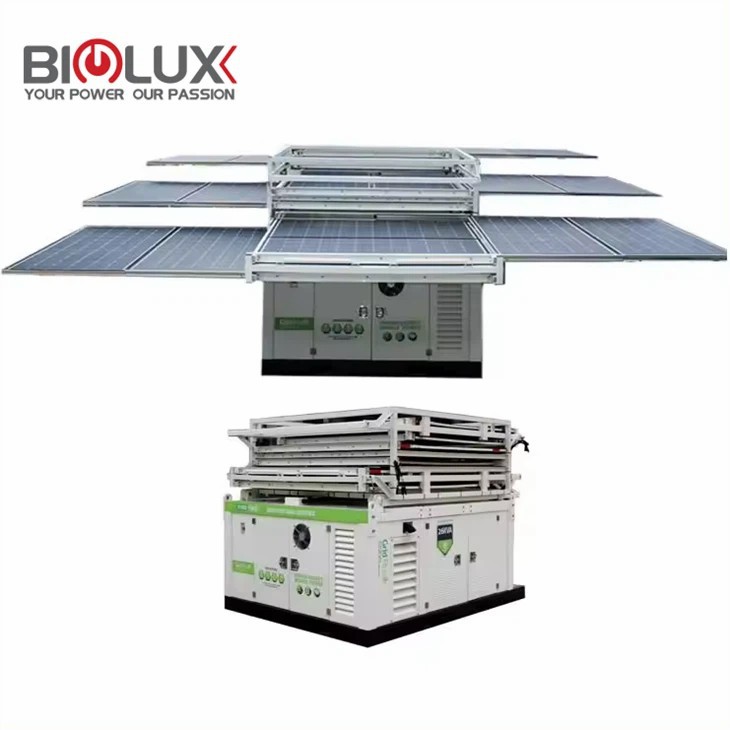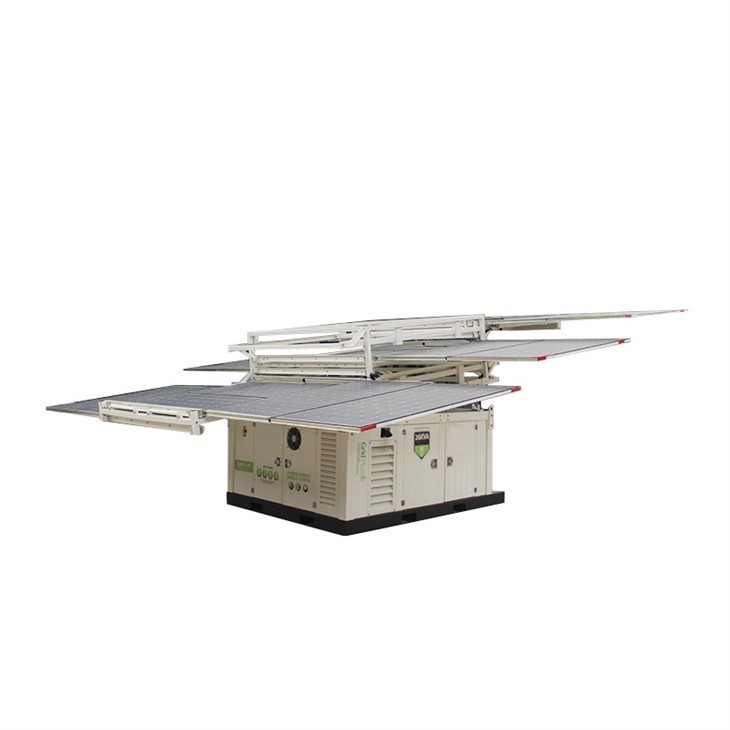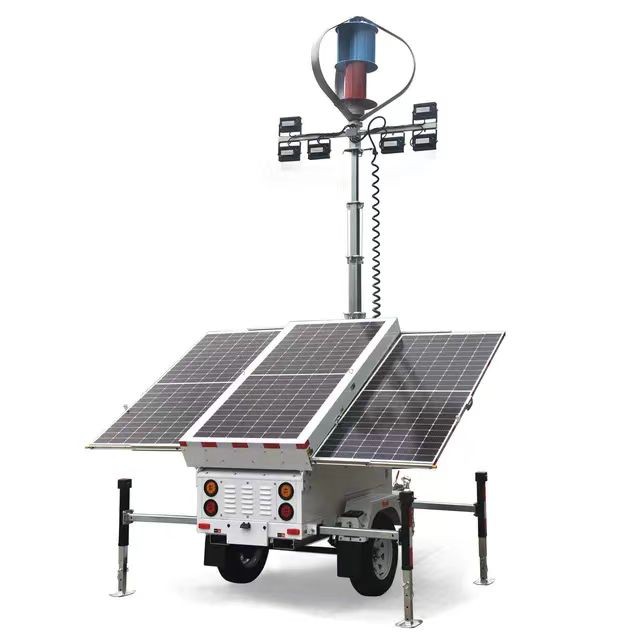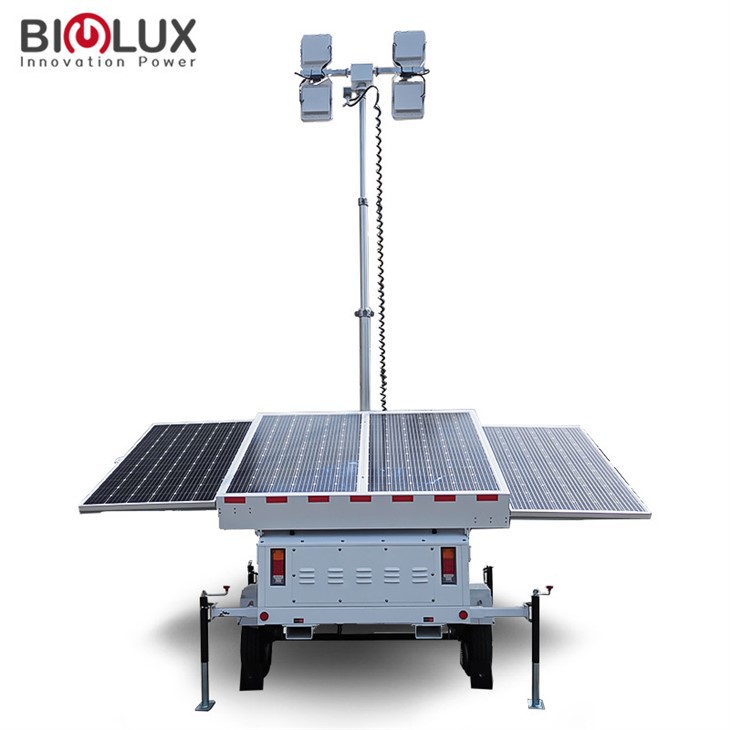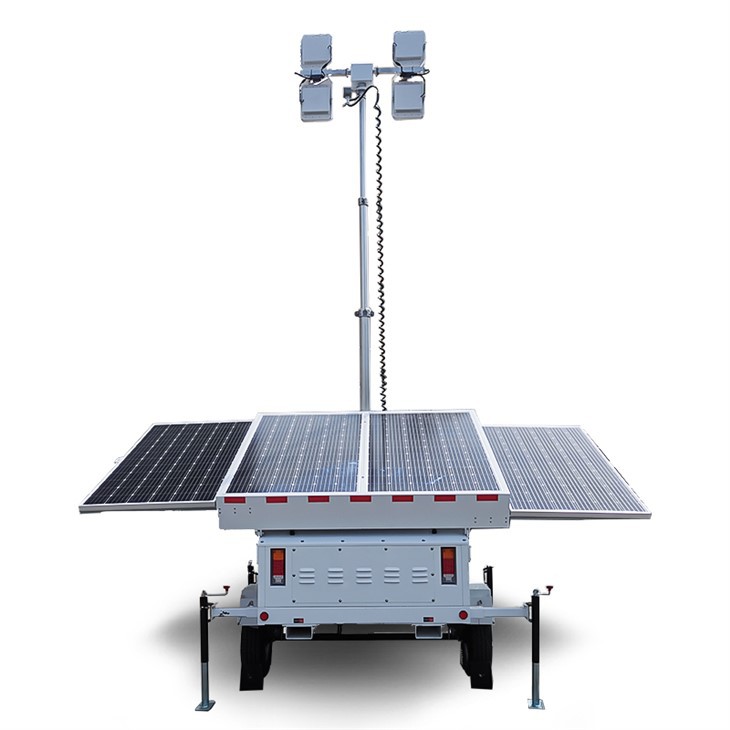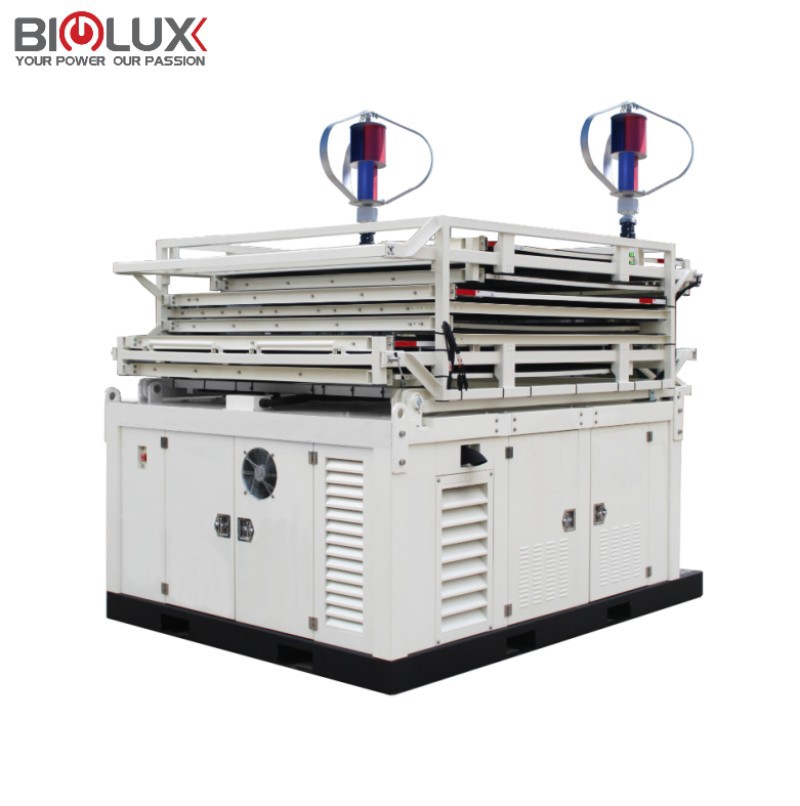Why Choose Us
Perfect Quality Control
We have professional quality management and process inspection.
Fast Quality Service
All customers' needs are solved quickly during the service process.
Support Ability of Supply
We guarantee good product quality and sufficient quantity.
Excellent Cost Performance
Provide the best products with the best price and service.
What Is Solar Power Station?
Solar power station refers to a facility that harnesses the energy from the sun using solar panels to generate electricity, which can be used as a sustainable and renewable source of power.
10KW 20KW Wind Solar Hybrid Base Station
By combining wind and solar energy, this hybrid base station ensures a reliable and continuous power supply, making it ideal for various applications such as telecommunications, emergency services, and rural electrification.
Diesel Lithium Hybrid Solar Generator
This setup provides a reliable, efficient, and sustainable power source that can be used in a variety of settings.
Solar Wind Hybrid Mobile Trailer
These trailers are equipped with solar panels and wind turbines, harnessing both renewable energy sources to generate electricity.
Mobile Solar Trailer With Wind Turbine
This setup allows for renewable energy generation that can be moved to different locations as needed. It's commonly used for off-grid power supply in remote areas, emergency response situations, or mobile operations where traditional power sources are unavailable or impractical.
Solar Power Generators with Light Tower
The generator space is enclosed with soundproof cotton on three sides, while the bottom is hollowed out, ensuring better heat dissipation of the fan while reducing noise.
Solar Power Generators with Light Towers
It is fully autonomous and self-sufficient in powering its equipment to the grid, eliminating the need to manually connect power or network cables and providing versatile security surveillance for remote or off-grid locations.
3480w Solar Light Tower with Wind Turbine
Biglux 3480w solar light tower with wind turbine for situations demanding high-intensity lighting or extended operating times, the 8 panel option provides the maximum solar power capacity. It's perfect for large construction sites,mining sites.or expansive outdoor events.
Our mobile solar power station Has the following advantages: Economies of Scale: Cost Efficiency: Larger solar power stations benefit from economies of scale, meaning that the cost per unit of electricity generated tends to decrease as the size of the installation increases.
Biglux hybrid solar wind generator AlO® is a new range of secure integrated hybridpower station. With diesel generator, solarpower, battery storage,wind turbine and hybridsolar inverter in one secure unit.AlO® is mainly developed for residents Power.
Energy Independence
Solar stations offer a remarkable advantage: empowering consumers with autonomy. By generating their electricity, individuals can free themselves from the uncertainties and high costs of utility providers. This newfound energy independence proves invaluable during power outages or in remote areas where traditional power sources are out of reach. Embrace the liberating potential of solar power!
Cost Savings
While the upfront investment in solar power stations may appear substantial, their long-term cost-saving potential is undeniable. Solar energy is essentially free once the infrastructure is in place, enabling consumers to recoup their initial investment gradually. Lower energy bills, combined with potential government incentives, render the transition to solar power financially appealing over time.
Eco-Friendly Operation
Solar power stations are a practical eco-friendly option, producing clean and renewable energy without emissions or environmental pollution. By harnessing the power of the sun, consumers significantly reduce their carbon footprint, aligning with the global drive for sustainability.
Reliability and Convenience
Solar power stations offer reliability, wherever the sun shines - energy is converted. High-quality units are equipped with substantial storage capacity, multiple recharging methods, ensuring a continuous power supply. This reliability proves indispensable in regions prone to power outages or areas where consistent energy access is challenging.
Supporting Renewable Energy
Investing in solar power stations is an active demonstration of support for renewable energy initiatives. The increased demand for solar products fuels innovation, drives down costs, and makes sustainable energy solutions more accessible to all, ultimately accelerating the transition to a greener future.
Long-Term Savings
Solar power stations promise not only reduced energy bills but also a return on investment within a few years. This financial benefit extends throughout the system's lifespan, potentially translating into substantial savings for consumers.
Environmental Stewardship
Choosing solar energy is an environmentally conscious decision. By decreasing reliance on fossil fuels, consumers contribute to a cleaner and more sustainable planet and climate.
Energy Security
Solar power stations provide a sense of security during power outages or emergencies. A dependable and self-sustaining power source can be a lifesaver in critical situations, ensuring essential appliances remain operational.
Types of Solar Power Station
Solar Photovoltaic Power Station
Photovoltaic power stations are also known as the PV. They convert sunlight into electricity. This type uses photovoltaic cells. These cells are made using silicon alloys. These panels are available in different forms. Some popular forms are crystalline solar panels and thin-film solar panels. PV options are preferred since it enables to store the solar energy into batteries. It can feed into the national grid as well. The PV stations will need inverters for transforming the power from the DC into the AC.
Solar Thermal Power Station
Solar thermal power stations collect sunlight in such a way that they can generate electricity. These are subdivided into three types. These are linear, solar dish power stations, and parabolic trough solar thermal. The most common ones are the linear collectors or solar dishes. These types normally consist of parallel rows. The solar thermal power station will produce heat from the sunlight. It will operate below 100 °C temperatures. The installations are available for residential and commercial properties. The generated heat can be used for different types of industrial needs.
Application of Solar Power Station
User solar power supply
Small power supply ranging from 10–100W, used for military and civilian life in remote areas without electricity such as plateaus, islands, pastoral areas, border posts, etc., such as lighting, TVs, tape recorders, etc. 3–5KW home rooftop solar on grid power generation system. Photovoltaic water pump: solve the drinking and irrigation of deep wells in areas without electricity.
Transportation
Such as beacon lights, traffic/railway signal lights, traffic warning/signal lights, Yuxiang street lights, high-altitude obstruction lights, highway/railway wireless phone booths, unattended road shift power supply, etc.
Communication/Communication field
Solar unattended microwave relay station, optical cable maintenance station, broadcasting/communication/paging power supply system; rural carrier telephone photovoltaic system, small communication machine, GPS power supply for soldiers, etc.
Petroleum, marine, and meteorological fields
Oil pipeline and reservoir gate cathodic protection solar power system, life and emergency power supply of oil drilling platform, marine detection equipment, meteorological/hydrological observation equipment, etc.
Home lighting power supply
Such as garden lamps, street lamps, portable lamps, camping lamps, mountaineering lamps, fishing lamps, black light lamps, tapping lamps, energy-saving lamps, etc.
Photovoltaic power station
10KW-50MW independent photovoltaic power station, wind and solar (diesel) complementary power station, various large parking lot charging stations, etc.
Solar buildings
Combining solar power generation with building materials will make future large-scale buildings self-sufficient in electricity, which is a major development direction in the future.
Other areas include
Matching with cars: solar cars/electric cars, battery charging equipment, car air conditioners, ventilation fans, cold drink boxes, etc. Renewable power generation system of solar hydrogen production and fuel cell. Power supply for seawater desalination equipment Satellites, spacecraft, space solar power plants, etc.
Components of Solar Power Station
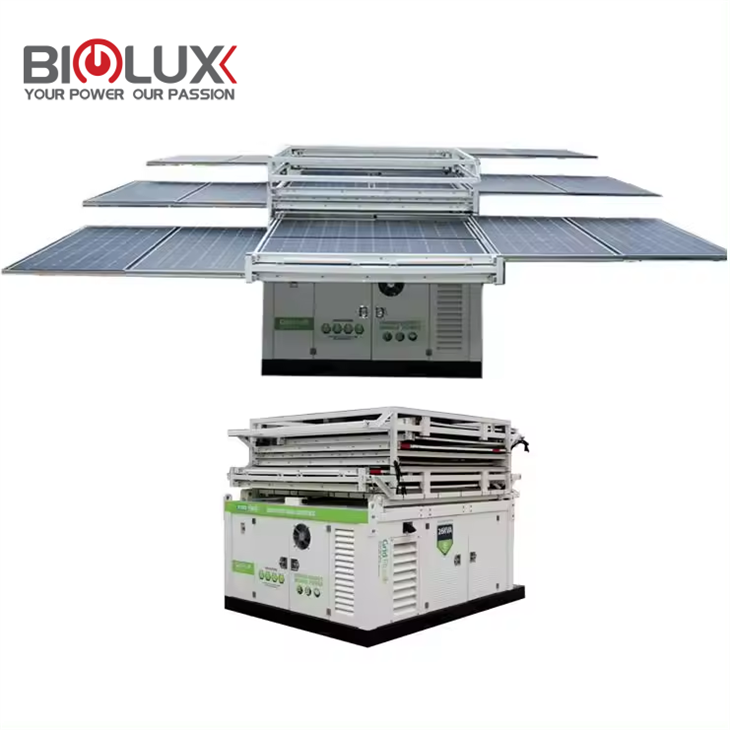
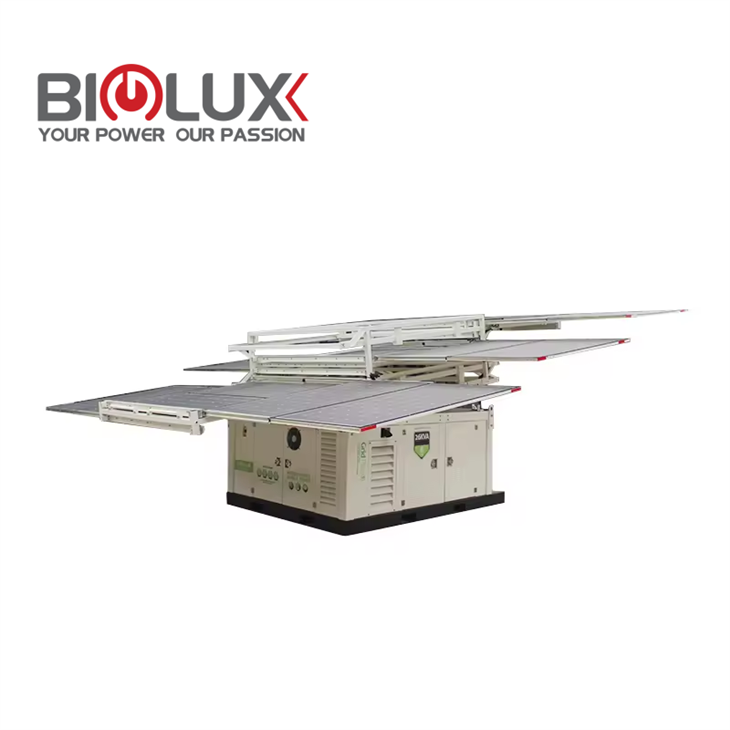
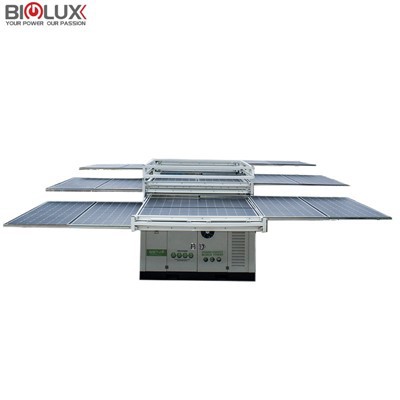

Solar Panels (Photovoltaic Modules)
Solar panels are the heart of a solar power station. They are made up of solar cells that convert sunlight into electricity through the photovoltaic effect. These panels are typically made of crystalline silicon or thin-film materials. Solar panels are mounted on support structures such as racks or tracking systems to maximize sunlight exposure.
Inverters
Inverters play a crucial role in converting the direct current (DC) electricity generated by solar panels into alternating current (AC) electricity, which is compatible with the electrical grid and most appliances. There are central inverters, string inverters, and microinverters, each with its own advantages and use cases.
Mounting Structures
Mounting structures, such as ground-mounted racks or rooftop mounts, securely hold the solar panels in place. Tracking systems can follow the sun's path throughout the day to maximize energy capture.
DC and AC Wiring
Electrical wiring connects the solar panels and inverters, ensuring the flow of electricity from the panels to the inverters and then to the grid or local load. DC wiring is used on the panel side, while AC wiring is used on the output side of the inverters.
Combiner Boxes
Combiner boxes collect the DC output from multiple strings of solar panels and combine them into a single DC circuit. They include safety features like fuses or circuit breakers to protect against overcurrent.
Transformers
Transformers step up or down the voltage of the AC electricity to match the requirements of the electrical grid or local distribution system. They also provide isolation and grounding.
Switchgear and Breakers
Switchgear and circuit breakers allow for the safe control and disconnection of electrical circuits in case of maintenance or emergencies. They ensure the overall system remains safe and reliable.
Monitoring and Control Systems
Solar power stations often include monitoring and control systems to track the performance of individual panels, inverters, and the overall system. These systems help identify and address issues promptly, optimizing energy production.
Energy Storage (Optional)
Some solar power stations incorporate energy storage systems, such as batteries, to store excess energy during sunny periods for use during cloudy days or at night. Energy storage enhances grid stability and allows for a continuous power supply.
Weather Monitoring Stations
These stations collect data on weather conditions, including sunlight levels, temperature, and wind speed, which helps optimize energy production and predict maintenance needs.
Grid Connection
Solar power stations are connected to the electrical grid through a grid interconnection point, allowing for the injection of surplus energy into the grid or the drawing of energy when needed.
Access Roads and Security
Solar power stations often require access roads for maintenance and security personnel. Security measures like fencing and surveillance may be in place to protect the facility.
Land or Space
Solar power stations need sufficient land or space to accommodate the solar panels, mounting structures, and associated equipment. Rooftop solar installations use available roof space.
Maintenance and Operations Center
Larger solar power stations may have dedicated facilities for maintenance and operations staff, including offices, storage, and workshops.
What Is The Best Battery For A Solar Power Station?
Lead acid
Lead acid batteries have been used in off-grid applications for decades, making them one of the most tested battery solutions. While they do indeed have one of the shorter life spans than other battery types, they are one of the cheaper options currently on the market.
Lithium ion
Lithium ion batteries are lighter and more compact than lead acid batteries. They also last much longer when compared to their lead acid counterparts. The one downside to lithium ion batteries is their high price. However, the cost is justified in the long term as they will eventually pay for themselves.
Saltwater
Unlike other the other battery storage options, saltwater batteries do not contain any heavy metals, relying instead on salt electrolytes. Lead acid and lithium ion batteries need to be disposed of with a special process, a saltwater battery however, can be recycled easily. Due to it being a fairly new technology, saltwater batteries are largely untested.
How to Design a Solar Power Station
A feasibility study
Begin by conducting a feasibility study to assess the viability of the solar power station. Consider factors such as available land, solar resource potential, grid connection feasibility, environmental impact, and regulatory requirements.
Site selection
Identify suitable locations for the solar power station based on factors like solar irradiance, topography, land availability, proximity to transmission infrastructure, and environmental considerations.
Solar resource assessment
Perform a detailed solar resource assessment to determine the solar energy potential of the selected site. This involves analyzing historical weather data, solar radiation levels, and shading analysis.
System sizing
Determine the capacity of the solar power plant based on the energy demand or the intended purpose of the project. Consider factors such as electricity consumption, peak demand, and specific project requirements.
Technology selection
Choose the appropriate solar technology for the plant, such as photovoltaic (PV) or concentrated solar power (CSP) systems. Consider each technology option's efficiency, cost, reliability, and suitability for the specific project.
Solar power station layout and design
Develop a detailed design and layout plan for the solar power plant. This includes positioning solar panels or mirrors, determining the tilt and orientation angles, and optimizing the arrangement for maximum energy production.
Electrical design
Create an electrical design that includes the configuration of solar panels, wiring, solar cabling, inverters, transformers, and other components. Ensure compliance with local electrical codes and regulations.
Interconnection and grid integration
Determine the best approach for connecting the solar power station to the electrical grid. Coordinate with local utilities and obtain necessary permits for interconnection. Design an effective grid integration system to ensure smooth power flow and compliance with grid requirements.
Civil and structural design
Develop the solar power station's civil and structural design plans, including foundations, mounting structures, and support systems. Consider factors such as wind loads, seismic activity, and environmental conditions.
Environmental impact assessment
Assess the potential environmental impact of the solar power plant, including land use, water consumption, and effects on local flora and fauna. Implement mitigation measures to minimize any adverse effects.
Project economics
Conduct a financial analysis to evaluate the economic viability of the solar power station. Consider capital costs, operational expenses, revenue generation, incentives, and return on investment.
Construction and commissioning
Execute the construction phase, ensuring adherence to the design plans and safety standards. Install the solar panels, electrical components, and other necessary infrastructure. Commission the plant and conduct thorough testing to ensure its proper functioning.
Operation and maintenance
Develop a comprehensive operation and maintenance plan for the solar power plant. This includes regular inspections, cleaning of panels, equipment maintenance, performance monitoring, and troubleshooting.
Monitoring and performance analysis
Implement a monitoring system to track the solar power plant's performance continuously. Analyze the data collected to identify and address any issues and optimize energy production promptly.
Main Elements of Solar Power Station Operation
Solar Panels
Solar panels are the heart of a power plant. They are built by a number of solar cells and are solely responsible for the success of a plant. The panels are positioned on the roof of a building at a tilted angle to maximize sunlight.
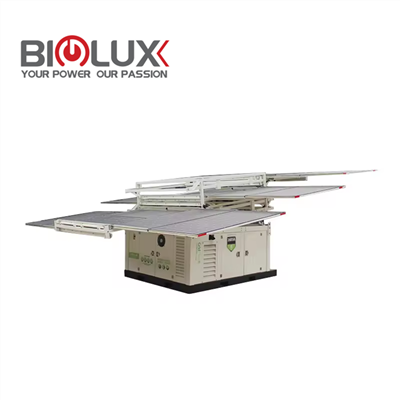

Battery Controller
A battery charge controller ensures consistent power to the batteries, which is utilitarian on days of less sunshine or at night. This takes care of the battery and makes sure the battery does not get discharged or overcharged.
Solar Power disconnects
A solar power disconnect cuts off the DC power output from the solar panel. It also looks into problems with the solar system. This component should be strong enough to control the power on a bright sunny day.

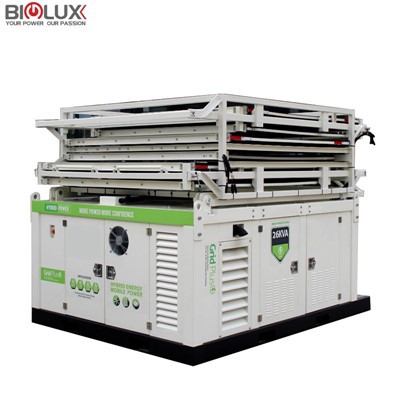
Solar cells
Solar cells are majorly responsible for the flow of electricity. The energy-generating unit is fabricated with p-type and n-type silicon semiconductors. The solar cells absorb the energy from the sunlight and create electrical charges, which move in response to an internal electric field.
Deep cycle battery storage
The solar system requires deep cycle battery storage in order to store the energy generated by solar panels. They are robust and are responsible for charging and discharging cycles.


Solar power system metering
Having a solar power system metre is an optional component but can help immensely maximise the solar system's efficiency.
Solar Panel Capacity
The most significant factor that affects the cost of a solar power station is its solar panel capacity. Solar panels are the main source of power for these generators, and the higher the capacity, the more electricity it can generate. Since larger solar panel systems require more materials and workmanship to install, they are typically more expensive.
Battery Capacity
A solar power station's battery capacity is another critical factor that impacts its cost. The size of the battery will determine how much power the generator can store and provide when needed. A higher battery capacity means more energy can be stored, but also means a higher cost.
Brand and Quality
Different brands offer various features and capabilities, and the quality of the components used can significantly impact the solar power station's cost. Top-quality brands will use more durable materials, have better performance, and longer life spans, making them more expensive.
Inverter Type
Inverters are essential components that convert the DC power generated by solar panels into AC power that can be used to power appliances. The cost of a solar power station will also depend on the type and quality of the inverter used.
Accessories
The final factor to consider is the accessories included with the solar power station. Some generators come with additional items such as LED lights, USB charging ports, and other features that can enhance the generator's functionality, which also adds to the cost of the solar power station.
Our Certifications
Innovation encompasses many breakthroughs thought when managing all aspects of its product design and development processes. We devoted to leading to the industry.


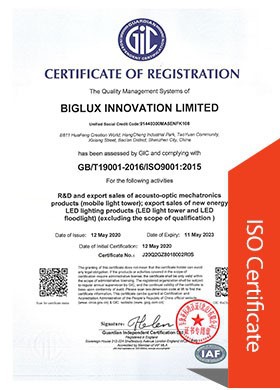
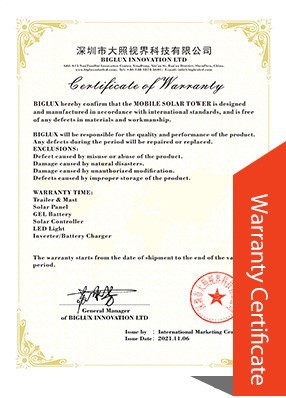

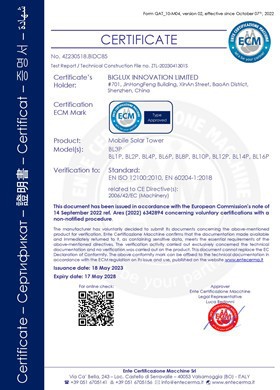
Our Factory
BIGLUX develops and implements specific & innovative mobile solar power and mobile solar generator solutions for different commercial and industry applications. By adopting the latest renewable energy technology, BIGLUX integrated solar and LFP battery system to develops and implements the most energy saving renewable mobile solar systems to work as solar light tower, solar CCTV tower and mobile power solution for outdoor parking lot, outdoor sports, events, construction site, work site, data base, military base and emergency applications etc.
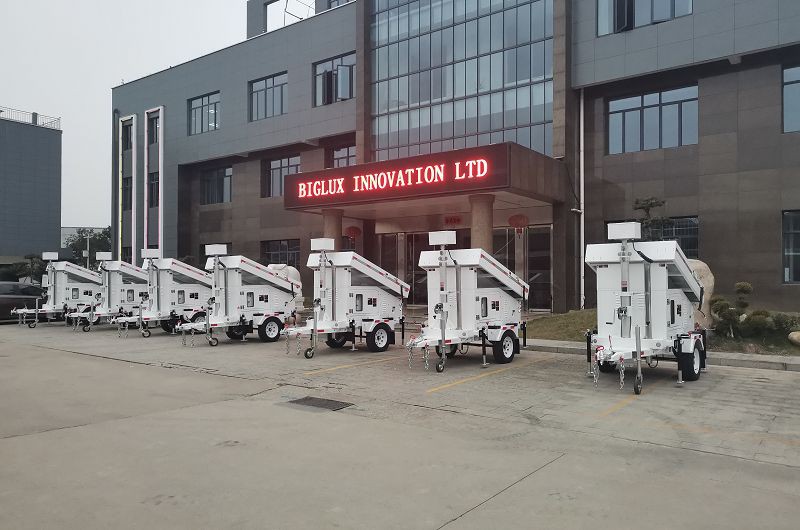
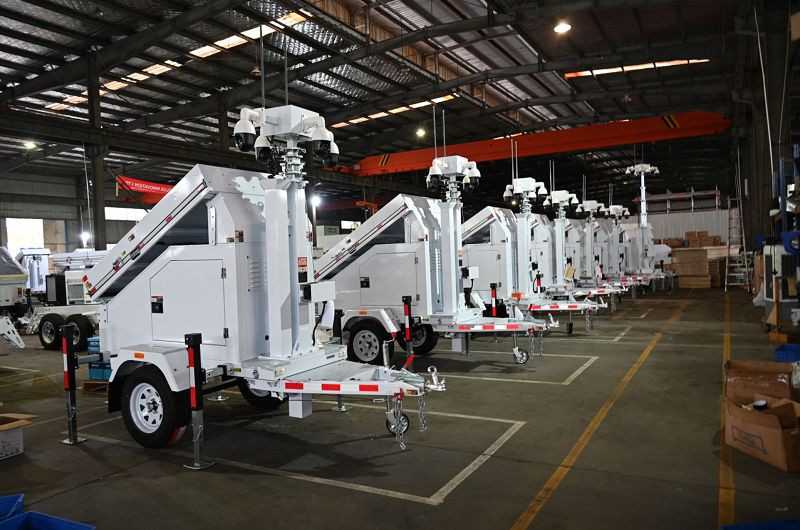
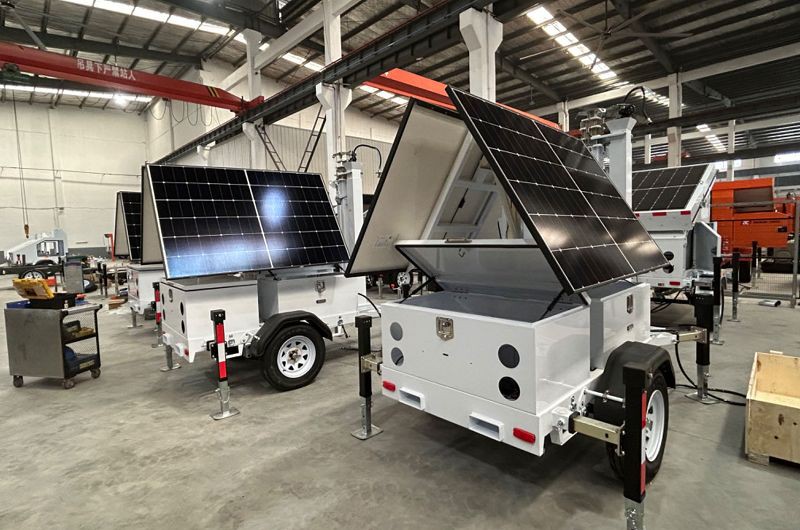
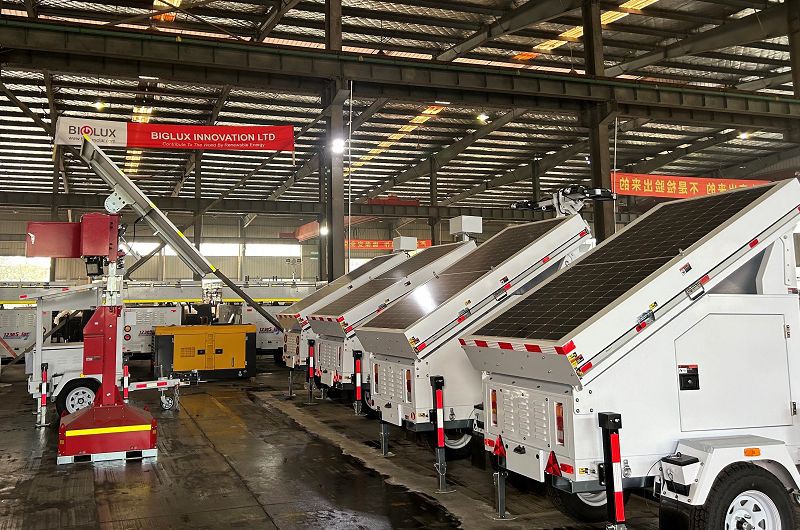

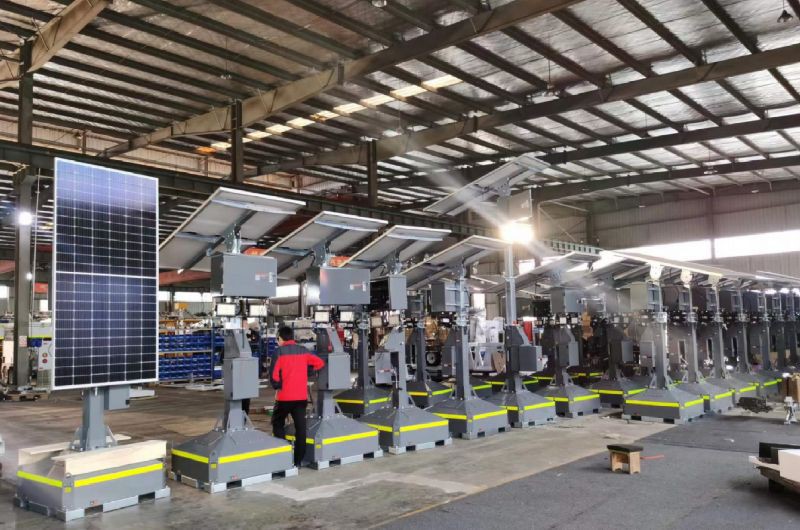
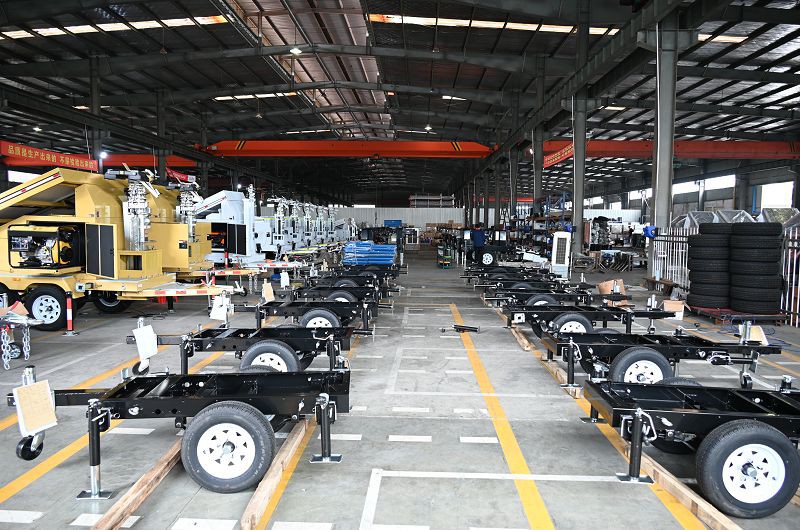
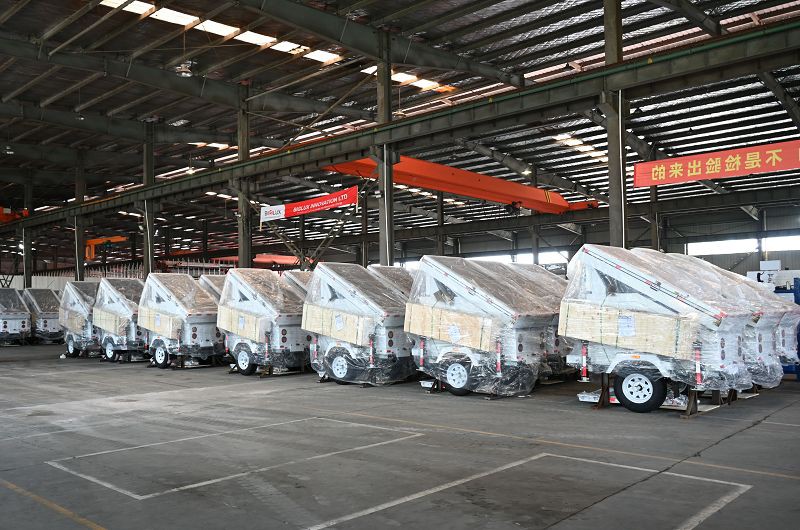
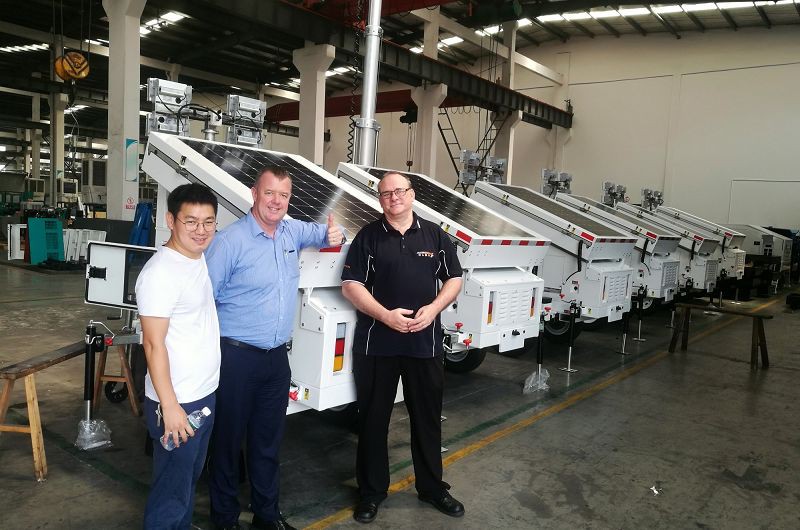
Ultimate FAQ Guide to Solar Power Station
Q: How does a solar power station work?
Q: What are 5 facts about solar power?
The efficiency of solar energy.
Panels produce energy without direct sunlight.
Panels can last up to 30 years.
It is the most abundant energy on earth.
Countries investing the most in solar energy.
Solar energy was discovered almost 200 years ago.
Q: What is the difference between a solar generator and a solar power station?
Q: What is the difference between a solar inverter and a solar power station?
Q: How to make a solar power station?
Buy a solar panel.
Buy yourself a battery and battery box.
Buy a DC input.
Invest in an inverter.
Attach meter and DC input.
Mount your components and wire them.
Test everything.
Q: What is better inverter or power station?
Q: How long does it take to build a solar power station?
Q: How do you connect solar panels to a power station?
Q: How long can you run a TV on a portable power station?
Q: How long do solar power stations last?
Q: Are power stations worth it?
Q: What is the risk of power station?
Q: Which is better generator or power station?
Q: How do I choose a good portable power station?
Determine the total wattage you require.
Consider the capacity of the portable power station.
Check the output wattage of the portable power station.
Consider portability and other features.
Q: How many years does a portable power station last?
Q: Can you overcharge a portable power station?










